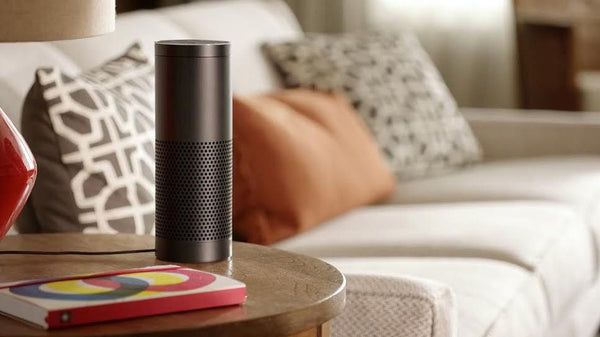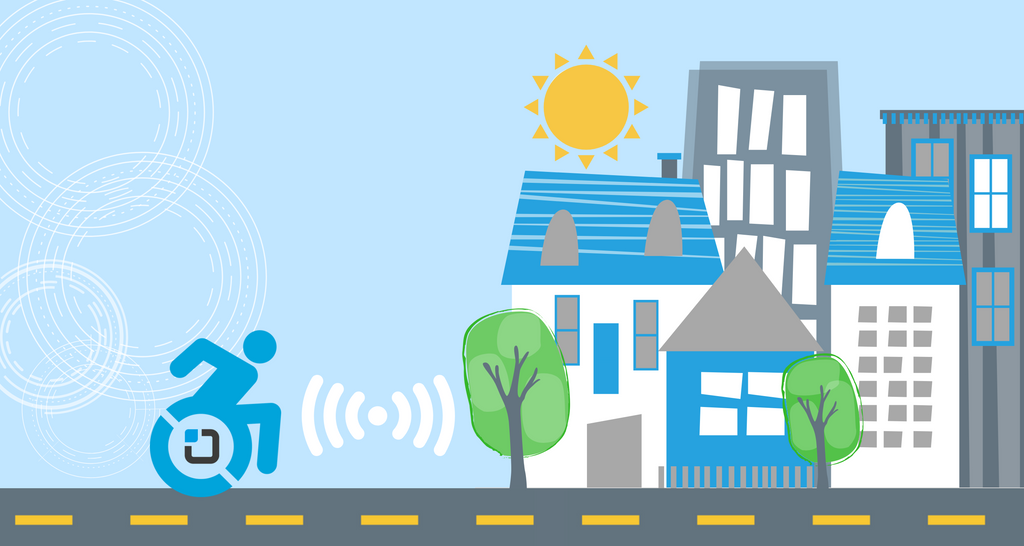Disabled Consumer Story: Tina
It’s 2018, and Tina is a 63-year-old single mom with two adult children in their late 20s. Tina recently retired early from working as an early education teacher as her progressive multiple sclerosis diagnosis made it increasingly difficult to move around the classroom and physically help students. Tina started using her iPhone more often to communicate with her children who both recently moved out. Her son wanted her to maintain her independence despite her decreasing mobility and purchased her an Amazon Echo device to give her more hands-free access to her to-do list and the Internet. When her disability made it challenging to hold her iPhone, Alexa and Siri were essential to keep her connected to her kids and network of friends and family.

Then, her daughter then discovered Tecla, which allowed Tina to have even more access to her iPhone through ability switches and was able to give her voice a rest. Gaining hands-free access to her iPhone meant that Tina could go back to enjoying her favorite mystery novel series in ebook format and post in the Facebook community that is used by all of her previous co-workers.
Her son was a tech guru and saw the potential of smart home technology to give her mom back control of her environment. He bought her Philips Hue smart lights for her living room and bedroom, so she could set her lights to turn on automatically or go in the Tecla app to adjust them herself.
Tina couldn’t believe how easy it was to add automation and smart technology to her life but didn’t know what other devices were out there and didn’t think she could afford to install them. She watched a video on Facebook that mentioned an affordable way to turn traditional tools into a smart appliance through something called a smart plug and purchased a WeMo plug to use with her portable fan in the summer months and humidifier in the winter. A week later, Tina saw an advertisement for WiFi-enabled blinds after being tired of waiting until her caregiver arrived to see sunlight. But, when she read the starting price was over $500, Tina knew she couldn’t afford it right now. The same feeling happened when she saw that a decent robotic vacuum cleaner was over $1,000.
Why This Will Change

We know that controlling your environment hands-free with ability switches or your voice allows for better independent living that traditional home accessibility devices. Assistive or adaptive technology that offers an alternative interface to interact with the world segregates people with disabilities in a way that inclusive technology does not. However, non-profits and governments rarely offer funding for consumer technology. If it was made without accessibility as the primary function, it is most likely not eligible, even though it could change the life of person living with quadriplegia.
Funding programs who support people with physical disabilities have the opportunity to give power back to the community by encouraging them to purchase less expensive off-the-shelf smart home devices instead of single-purpose assistive devices that are incompatible with consumer technology. Even if the funding programs remains strict on what devices they will fund, here’s why you don’t have to worry about smart homes being too expensive in the next 10 years.
1. The smart home market is predicted to grow exponentially.
The CEO of the smart home security company Notion, Brett Jurgens, believes that the Internet of Things powered home is just in its beta stage. “The general consumer is still getting a grasp on different products and isn’t yet able to fully understand the various platform and integration options.”
According to Vernon Turner, senior vice president of enterprise systems at IDC, by 2025, approximately 80 billion devices will be connected to the Internet. If around 4,800 WiFi-enabled devices are being connected to the network every minute that you’re read this, then by 2025, the figure will be closer to 152,000 every minute.
2. More choice = more competition
The current reality is that we cannot purchase a single line of products that will control our entire home. There are comparable products in every category, including kitchen appliances, home hubs, and temperature control. With many players entering the Internet of Things revolution so early on, we are going to have even more choice of mixing products from tech giants like Amazon, Apple, and Google as well as companies like Allconnect and Neurio.
3. The solutions that are the most useful will become the most popular
4. Smart home devices are easy to install and setup
The majority of people have WiFi, and that’s really all you need beyond someone who is able to mount or plug in the smart home device. Previous technology required sensors and high-tech additions to each room to make the tools useful. Once a smart device is plugged in and you’ve downloaded the companion app, the Internet of Things does the rest for you, and all customization can be done through the apps or your voice.


1 comment
Jan 28, 2019 • Posted by Paul Thompson
You need an editor! Great story, and very helpful, just needs lots of editing.
Leave a comment: